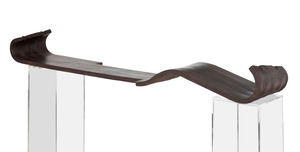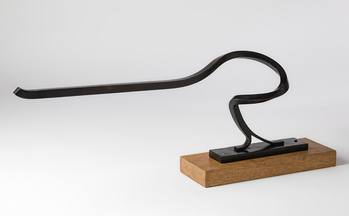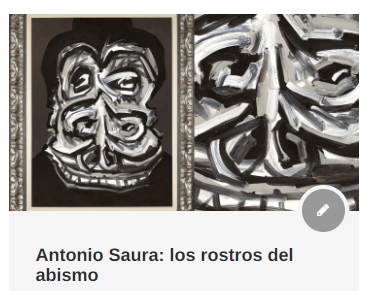Martín Chirino: the poetics of wrought iron
Throughout the 20th century, sculpture underwent probably the most radical revolution in its history. The aesthetic fracture brought about by the avant-garde also brought about a reformulation in the conception of sculptural practice, whose principles and procedures had become obsolete.
For centuries, Spanish sculpture was a reproduction of the forms, themes and materials developed in the Baroque period. However, the new and convulsive times demanded more than ever new expressive formulas capable of reflecting this new reality. This dizzying conceptual redefinition of sculpture is marked by an unprecedented variety of styles, themes and media whose complexity does not allow for the construction of a linear narrative with a single meaning.
Thus, in the first decades of the century, Cubism swept away many of the sacred principles of traditional art, unleashing an inescapable need for experimentation. Thus, figurative art in which the representation of the human figure was losing steam in favor of new abstract expressions in which the idea of volume and form is the result of the play between occupied space and emptiness. This desire for renewal was manifested in the use of new techniques and materials, such as iron forging, which represented a real revulsive in a sculptural conception identified until then with the solid and solid. This impulse initiated by artists such as Gargallo, Julio Gonzalez or Pablo Picasso opened the way for later generations of artists such as Martín Chirino who transformed this material into authentic visual poems.

Martin Chirino
“Atlántica III- The sea”, 1988.
Awarded for 65.000€ in Setdart
“Homage” Marinetti Series XI” reveals the principles on which Martin Chirino built his work, whose abstract aesthetics always had nature as a final reference and especially that of his native land. Since he joined the El Paso group in 1950, the Canarian artist found what would be the leitmotiv of his entire career: the curved line. Through it, Chirino endowed the iron with a soul of its own in which the expression of his island origins beats. As it is extensible to all his work, his homages to Marinetti, founder of futurism, cannot be conceived without the spirals and curvatures to which he subjects the iron, twisting it with a fascinating elegance. to draw an exquisitely delicate line in space. In this way, Chirino combined in his work the memory of the past, rediscovering Canarian culture with the postulates of the Spanish avant-garde of the fifties, until he became part of the first generation of post-war Spain to relate to international artistic creation.
After 70 years working with iron, Chirino achieved one of his highest creative aspirations: that his sculptures would fly and flow like the wind of his inseparable Las Canteras Beach.






